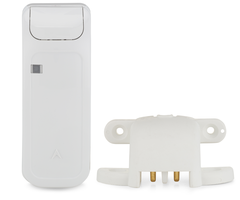Get Ready for Winter with Alarm Grid!
Posted By Michael GorisWe are now in the month of December, and 2019 is quickly approaching its end. Now is the time to start preparing for the winter ahead. We have products that are perfect for the winter, including freeze sensors, flood sensors, and doorbell cameras. Make sure you and your family are ready!
 Whether you love it or hate it, you likely know what winter brings for most of the country. There will likely be some cold weather and snow. The holiday season will also be happening soon, and presents will be sent out. Although Alarm Grid doesn't have anything to help you shovel your driveway or defrost your car windshield, we do have some important accessories that will help ensure that your winter season is a good one.
Whether you love it or hate it, you likely know what winter brings for most of the country. There will likely be some cold weather and snow. The holiday season will also be happening soon, and presents will be sent out. Although Alarm Grid doesn't have anything to help you shovel your driveway or defrost your car windshield, we do have some important accessories that will help ensure that your winter season is a good one.
Today, we have three product categories that we would like to discuss. Making sure that you have these devices set up and running is very important for the winter season. Let's check them out!
Freeze Sensors

When it gets cold out, you will definitely want to have some temperature sensors or freeze sensors ready to go. These devices alert your system when the temperature drops to an unusually low level because of a broken HVAC system. Most temperature sensors can detect both unusually high and low temperatures, so they are also good for the summer months.
These devices will usually activate around 40°F. This is high enough above freezing so that you will have time to take action, but still way lower than you would ever keep your home. Total Connect 2.0 can even send you alerts regarding an activated freeze sensor. Alarm.com users can get similar alerts using a Z-Wave thermostat.
Flood Sensors

You might not think of flooding during the winter months. But many house floods occur when snow melts, and the water needs some place to go. You can use flood sensors to detect water leaks before they result in serious damage. Many temperature sensors also double as flood sensors, so you certainly have many environmental sensors to choose from!
The typical flood sensor uses a probe and will activate upon detecting a very small amount of water. This is important for ensuring that you are alerted before a water leak develops into a serious problem. And interactive platforms like Total Connect 2.0 and Alarm.com can send you alerts for activated flood sensors.
Doorbell Cameras
 Amazon is going to be busier than ever this holiday season delivering packages across the country. With packages being delivered faster than ever, package thieves are becoming a serious concern. Stolen presents won't lead to a merry holiday season, especially if you don't have any evidence of the crime. This is why you should definitely install a doorbell camera.
Amazon is going to be busier than ever this holiday season delivering packages across the country. With packages being delivered faster than ever, package thieves are becoming a serious concern. Stolen presents won't lead to a merry holiday season, especially if you don't have any evidence of the crime. This is why you should definitely install a doorbell camera.
By using footage from a doorbell camera, you can catch any package thief red-handed. These devices are also great for checking who is at your door from your phone, without having to get up. After all, it might be a delivery, or it might just be some annoying solicitor. Most doorbell cameras will support a mobile app that you can use to check the live feed from anywhere. The SkyBell Cameras sold on our website are perfect for this!
We're Here to Help!

Need help choosing the perfect items for your home? Alarm Grid is here to help. We are happy to discuss our services and find the perfect products for your needs. The best way to contact us is to email support@alarmgrid.com. Remember that our support hours run from 9am to 8pm ET M-F. We look forward to helping you this winter season and beyond!





